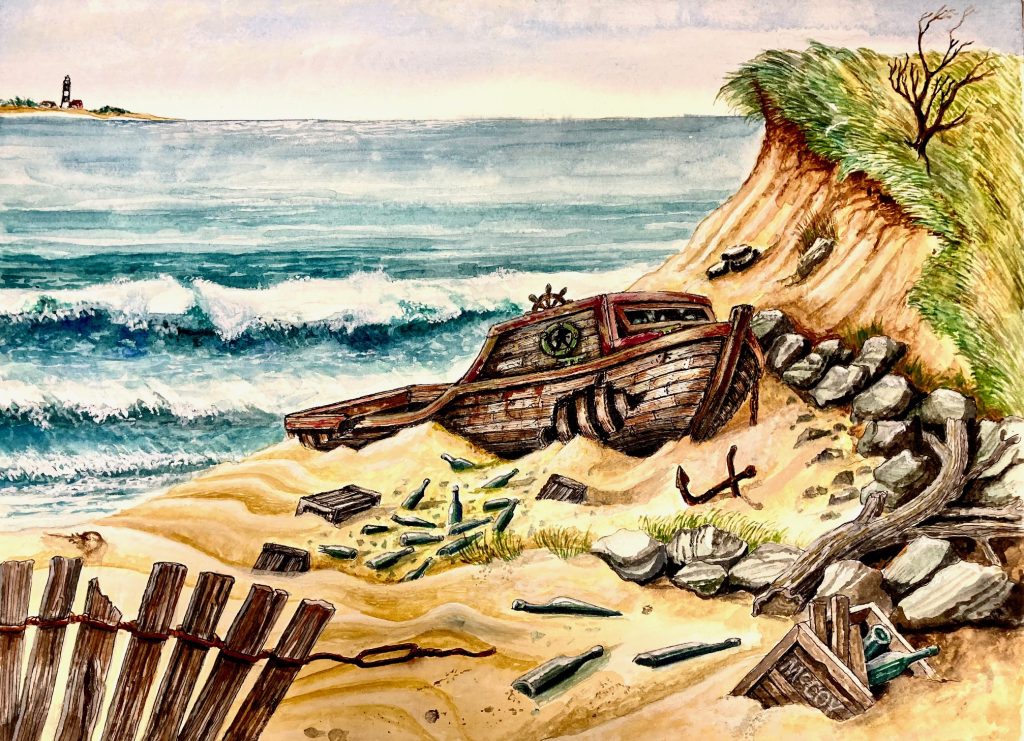Driving over the Goose Neck Bridge at least four times a week, I keep noticing a fair-size Catalina-type sail boat abandoned on the southwest side, close to the base of the bridge. It’s obviously abandoned for convenience and is a critical danger to mariners using this bridge and the bay. You have no idea how that pisses me off. Yet for the last three months, neither the bay constables nor the police have done any remediation. Will they wait until someone gets hurt? I think it’s time to go over the proper protocols for the disposal of your vessel, should that time come.
So, you have an old boat you no longer love or want. If you are emotionally attached to it, well, that can be trying. First, you need to get your head around the fact that it’s time to do something and that could take a while. I know chaps who have had their boats decaying in their yards for years. My cousin grew so pissed off at his son’s old Mako hull lying in his yard that he filled it with topsoil and grew the best tomatoes and basil in it for years. They were kind of tasty, but I always thought they had a slight aftertaste of fiberglass. That son, Jim, James, Jimmy, or whatever his name is today, now has a beautiful classic boat he runs out of Manasquan. Every year he keeps a tomato plant on board in honor of his father, my cousin Steve.

Now let’s get into the nitty-gritty. If the boat is restorable, there is a market for it. You have Boating World, Craig’s List, Facebook Marketplace, boating magazines, E-bay, word of mouth, and the old fashion way, printed 8 ½ by 11” post-ups you leave around or post up in marinas and nautical areas. No matter how chewed up a small early 13ft. Boston Whaler, you never trash it. There is always someone looking to buy and restore it. Small boats that are beyond repair, you can cut up and take to the dump. Remove all the brass hardware which is reusable and re-saleable. In today’s world, we should keep in mind that multi-function and reusable parts help reduce our carbon footprint. Aluminum boats, once cut up, can be sold for scrap thereby putting a few bucks back in your pocket. I have cut up quite a few wooden, aluminum, and fiberglass skiffs in my time. My best advice is if you haven’t done it before; get someone who knows what they are doing, that way you’ll keep your hands and fingers. Place the small parts in the public dump and you’re done.
Many charities will pick up your boat, as long as they are restorable, no matter what size, and give you a receipt you can use as a charitable deduction. You can contact boatsofhope.com, kars4kids.org, boatangel.com, boatsforvetrans.org, wheelsforwhishes.org, boatus.org, and so many others you can search out on the internet. You can also contact New York Maritime College. They take boats as a donation also.
If you have a larger distressed vessel that should never sail the seas again and no one is stupid enough to take it, there is another option. SALVAGERS! Sounds like piracy! But salvagers are a good alternative. You will pay for the service and some of them have restrictions due to EPA laws but most offer good and fair service for the price. There are many around that you can find on the internet. Once you hand it over to them you will find a sense of relief while you thumb through the latest boat magazine and dream of the new one, you’re after.
Now let’s go over what you do NOT do with your old vessel. You do not scrape off the hull numbers and pull it up onto the wetlands as I often see on the bay. You do not release it and let it float away to become a navigational problem to other boaters and possibly endangering lives. Neither do you have an “Accidental” fire so that you can claim insurance loss while risking property damage and loss of lives. You don’t put a hole in the hull at night and let it sink. You use your God-given brains and dispose of the boat responsibly. That’s what we, who love the bays and sea, do!
See you on the water
Captain Eddy (Retired)
